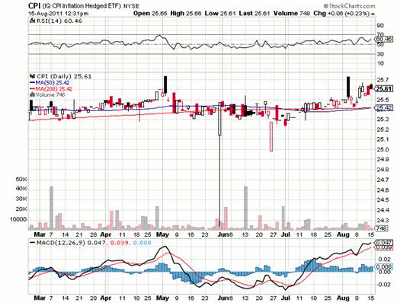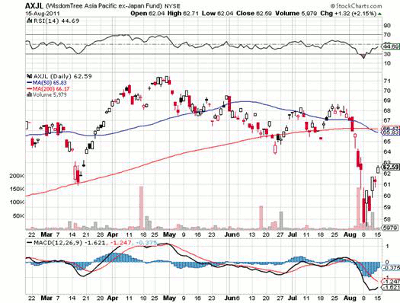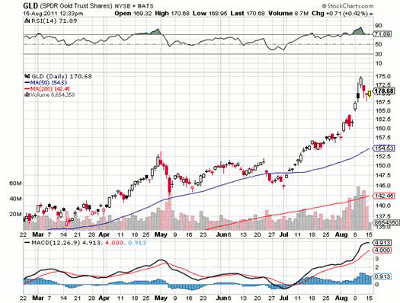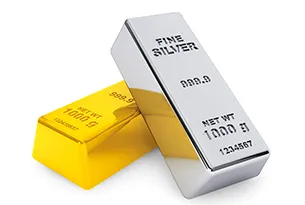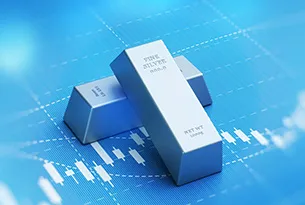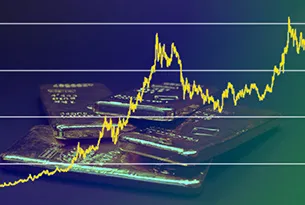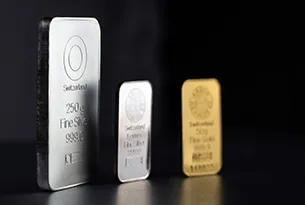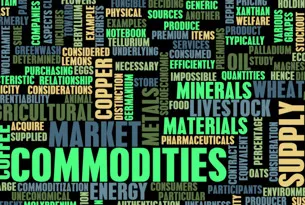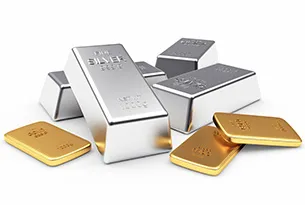With the US market facing extreme pressure, these three ETFs are designed to provide relative safety and/or yields for defensive-minded investors.
Debt ceilings, downgrades, and selloffs of epic proportions have combined to make the last few weeks a major headache for traders and investors. With the outlook for the US economy changing drastically, many are unsure of where place their assets.
Starting with the debt deal that took longer than expected to pass, markets reacted poorly to the agreement reached and the plan it outlined. While many thought that the worst was over, investors’ attention was immediately grabbed when they saw that Standard and Poor’s, straying from counterparts Moody’s and Fitch, officially removed the US from the AAA rating club.
The decision has been met with furious backfire from the Obama administration, who claim it was a “facts-be-damned” decision, while others feel that the downgrade had political motives. Still, some analysts feel that a downgrade of our sovereign debt was long overdue, as our debt-to-GDP ratio is becoming something of a burden as we stare at the largest nominal pile of debt in the history of the world.
While this is the first and only downgrade of US debts in its 235-year history, investors should remember that we are still AA+, a rating that many countries can only dream of achieving. Nevertheless, stocks tumbled in reaction to the news, as the mere fact that a US credit rating agency recognized our debts as a serious issue shook investor confidence to the bone.
In terms of the reasons for this historic event, S&P issued a statement that, “Although we believe these strengths currently outweigh what we consider to be the US’ meaningful economic and fiscal risks and large external debtor position, we now believe that they might not fully offset the credit risks over the next two years at the ‘AAA’ level…more than two years after the beginning of the recent crisis, US policymakers have still not agreed on how to reverse recent fiscal deterioration or address longer-term fiscal pressures.”
And the trouble didn’t stop there, as S&P went on to downgrade both Fannie Mae and Freddie Mac, giving the whole world flashbacks of late 2007 and early 2008.
Last week, President Barack Obama issued a statement saying S&P doubts the US political system more than it doubts their debt structure. While the Obama administration said that the markets feel we are still a AAA country, the President stated that the political instability was the major source of the downgrade, as individual parties refuse “to put what is best for the country ahead of self-interest.”
In this treacherous environment, choosing a safe investment can be a daunting task, as the vast majority of investment options have significant ties to the weakening US economy. Yet, there are assets that exist to help investors make a defensive play in the markets. Below, we outline three ETFs that present strong defensive opportunities in times of extreme market pressure.
NEXT: See the 3 Defensive ETF Picks
|pagebreak|IQ Real Return ETF (CPI)
This ETF tracks a benchmark that seeks to provide a hedge against the US inflation rate by providing a real return or a return above the rate of inflation, as represented by the Consumer Price Index. Holdings in this product are generally made up of short-term Treasurys as well as some gold exposure.
While US debt sounds like the last place anyone wants to be, short-term Treasurys have an extremely low possibility of defaulting, and their yields, while small, allow investors to keep ahead of inflation. This product will likely remain very flat, but it will provide small returns that an investor would miss out on by simply sitting in cash during times of market instability.
Furthermore, CPI’s low correlation to major equities makes it a strong defensive play for today’s economy; its annualized volatility is just over 2%. The ETF is virtually flat on the year and is slightly up in the trailing 52-week period, which is more than what can be said for most American equity indexes.
Pacific ex-Japan Total Dividend Fund (AXJL)
AXJL tracks the WisdomTree Pacific ex-Japan Dividend Index, which measures the performance of dividend-paying companies in the Pacific region, including Hong Kong, Singapore, Australia, and New Zealand.
Top holdings in this product include big names like China Mobile (CHL), BHP Billiton (BHP), and CNOOC (CEO). Though these are giant-cap companies that likely have ties to the US economy, they will allow investors to make a play overseas and away from battered US markets. In fact, AXJL was actually posting a small gain in Monday’s trading session, a pretty remarkable feat for an equity fund.
But the real defensive mechanism of this ETF comes from its dividend prospects, as dividends can make for solid investments during bear markets. Dividend yields act as an inflation hedge, as well as a way to play against bear markets because a steady income helps investors maintain gains throughout rough patches. This ETF, keeping its exposure out of direct US assets, and paying out a current 30-day SEC yield of 3.23%, will give investors a healthy income stream to help them through the days ahead.
SPDR Gold Trust (GLD)
GLD has been one of the most popular ETFs this year, as gold has surged to historic new highs on what seems like a weekly basis. With the precious metal now sitting above $1,700 per ounce, gold has become the one of the hottest commodities of 2011. The metal has long been a safe haven for investors who have grown wary of equities, and as markets have plummeted, inflows to gold have surged.
GLD utilizes a physically-backed methodology to give investors exposure to gold bullion and will present itself as one of the most popular ETF investments for however long the current market instability persists.
By Jared Cummans, contributor, ETFdb.com


